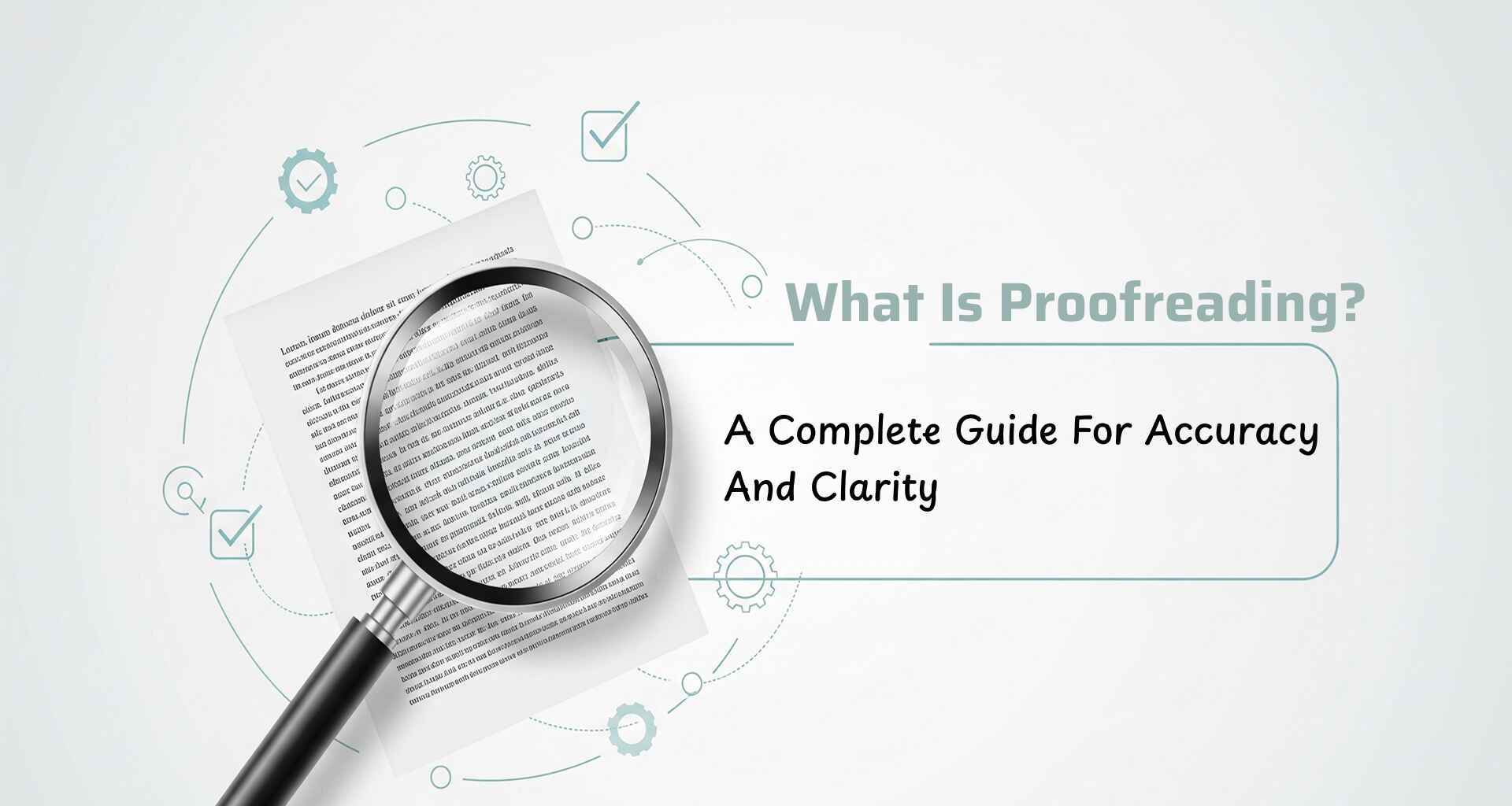
jefreena
What is proofreading? It is the final stage of reviewing any document to ensure it is free from errors and perfectly polished. Whether you are a PhD scholar preparing a dissertation, a business professional drafting a report, or a writer publishing an article, accuracy, grammar, and formatting are critical. Proofreading ensures that your work reflects professionalism and attention to detail.
Many people confuse proofreading with editing, but understanding the difference between editing and proofreading is important. Editing focuses on improving clarity, tone, and structure, whereas proofreading deals with correcting surface-level errors such as spelling, punctuation, and formatting.
Professional proofreading services are essential for anyone who wants their work to make a strong impression. At Ondexz, we provide expert proofreading that guarantees your academic papers, business documents, and manuscripts are flawless and ready for submission.
Proofreading is the final step in the writing process, where a document is carefully reviewed to detect and correct errors in grammar, punctuation, spelling and formatting. Unlike editing, which improves structure, clarity and tone of the document. Proofreading focuses on surface-level mistakes that can affect readability and professionalism.
By systematically checking for errors, proofreading ensures that your work is polished and ready for publication. This step is especially critical in academic and professional contexts, where even minor errors are identified and can create an impact on credibility or journal acceptance.
Professional proofreaders combine keen attention with expertise in language rules to deliver flawless documentation. Tools and software can help, but human judgment is essential for finding subtle, minor errors, and it is essential for maintaining consistency throughout the text.
Many writers, scholars and professionals often confuse editing with proofreading, but understanding the difference between editing and proofreading is essential for producing high-quality work.
Focuses on improving the structure, clarity and tone of the document
Involves revising sentences and reorganising paragraphs
In an academic scenario, A PhD scholar who works on a thesis may need editing and the editor might restructure the literature review, clarify the research objectives and improve coherence in the discussion.
In a business scenario, A marketing report may be edited to sharpen messaging. Editing ensures ideas flow logically and persuasively for stakeholders.
Acts as the final stage of review, focusing on the surface-level corrections.
Detects grammatical errors, punctuation, spelling, formatting issues and citation
In an academic scenario, A PhD scholar’s journal article may be proofread to ensure references follow the required style, headings are consistent, and no typos remain.
In a business scenario, A proposal may be proofread to remove minor errors that could undermine credibility and professionalism.
For PhD scholars, proofreading is not a nice-to-have exercise—it is an absolute must-do before submitting research papers, theses, or dissertations. Academic work is not only evaluated on the merit of its ideas but also on the accuracy, clarity, and presentation of the work. A small grammatical error, a citation mistake, or a formatting mistake can lose your work badly in terms of credibility.
Proofreading makes sure that all sentences are refined and error-free, so your research looks more professional and easier to read for others. It also helps to identify inconsistencies in the style of references, tables, and figures, which may otherwise cause confusion or rejection upon assessment. A proofread manuscript makes the document readable, keeps the academic integrity intact, and increases the likelihood of journal acceptance.
Additionally, proofreading prevents scholars from running risks of plagiarism due to misplaced citations or details that have been left behind. By delivering error-free and uniform work, researchers showcase diligence, professionalism, and dedication to superior academic work.
At Ondezx, our expert proofreading services are written specifically for research scholars. We make sure that your papers are plagiarism-free, in conformity with university norms, and ready for submission to a journal. With professional guidance, you can work on your research while we make the final presentation of your paper perfect.
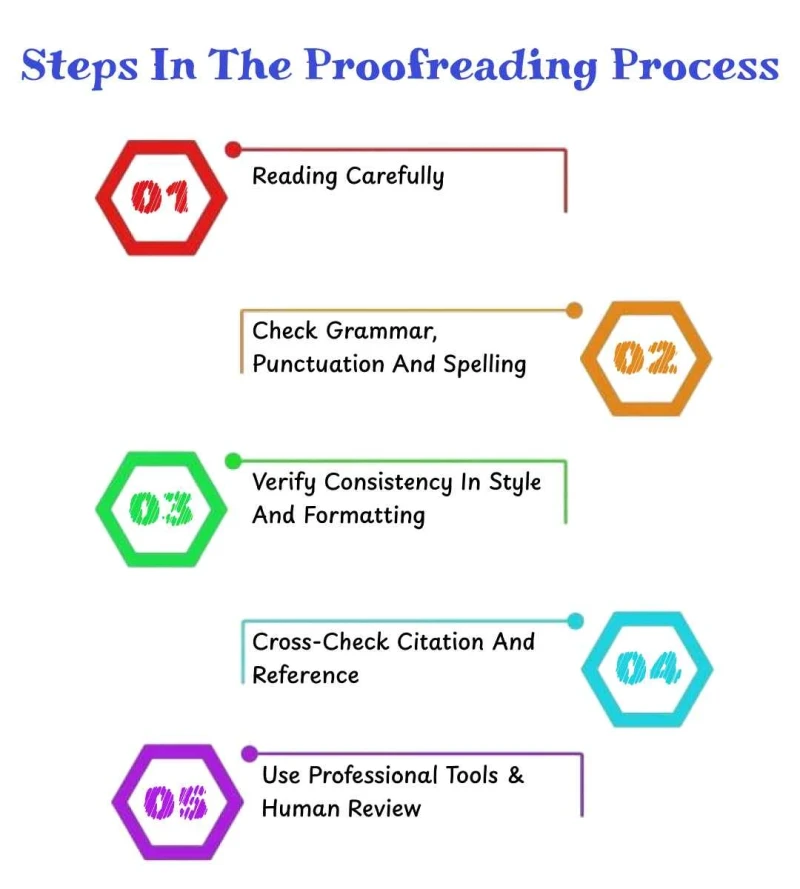
A systematic proofreading process transforms a draft into a submission-ready document. Below are five essential steps, each explained with practical advice and examples, followed by how Ondezx combines tools and human expertise to guarantee accuracy.
Proofreading begins with slow and focused reading. Proofreaders read the document multiple times; The first pass is for the overall sense and structure, the second pass is for spotting the sentence-level errors, and the final pass is to check the formatting and reference.
Practical techniques include reading aloud to catch awkward phrasing, printing the document to change visual perspective, or reading sentences backwards to isolate typos.
Example: Reading aloud can reveal a missing article that a cursory scan misses.
This step targets language mechanics: Subject-verb agreement, verb tense consistency, punctuation placement, hyphenation rules, and correct spelling (including British English variants). Proofreaders also check numeric consistency date, statistics and units
Example : Ensuring “data is” vs “data are” follows the chosen academic convention; correcting inconsistent use of hyphenated compounds improves readability.
Consistency extends beyond words to layout. Proofreaders confirm heading levels, caption format, table numbering, footnote style and uniform use of fonts and spacing. They enforce a single style guide across the manuscript (e.g. APA, Chicago or a university template)
Example: Aligning all chapter headings to Title case and ensuring all the figure captions follow the same punctuation rules.
Accurate citations are essential for scholarly credibility. Proofreaders match in text citation to reference list, verify DOI/URL accuracy and ensure consistent punctuation and ordering within references. They also check that cited figures or tables are present and correctly labelled.
Example: Correcting an in-text citation that misses an author or year to prevent reviewer confusion.
Proofreading blends software and expert judgement. Tools like grammar checkers, reference managers, and PDF compare utilities, which identify patterns and obvious errors. Human proofreaders resolve nuanced or domain-specific issues.
Example: A grammar tool might highlight subject–verb disagreement in “The findings indicate a trend.” However, only a human proofreader can ensure that references are cited correctly and that terminology matches the academic discipline.
|
Feature |
Online Tools |
Professional Proofreading |
|
Error Detection |
Identifies basic errors like typos, punctuation, and simple grammar mistakes. |
Detects nuanced errors including context, tone, discipline-specific terminology, and formatting issues. |
|
Context Understanding |
Limited; cannot interpret meaning, style, or academic context accurately. |
High; understands subject-specific nuances and ensures clarity and coherence. |
|
Reliability |
Moderate; may suggest incorrect corrections for technical or specialised terms. |
High; human judgement ensures accurate, precise corrections. |
|
Scope |
Focused on surface-level errors. |
Comprehensive; covers grammar, structure, citations, formatting, and overall readability. |
|
Suitability |
Quick checks and initial drafts. |
Final polishing of research papers, dissertations, assignments, and professional documents. |
|
Outcome |
May miss subtle mistakes or stylistic issues. |
Produces credible, publication-ready, and high-quality academic work. |
In academic writing, even minor errors can affect the credibility of research and lower the chances of acceptance in journals or PhD submissions. Professional proofreading ensures that grammar, syntax, and formatting meet scholarly standards, while also checking for consistency in citations and style.
For PhD scholars and students, investing in proofreading refines arguments, eliminates distractions caused by language issues, and strengthens clarity. Whether it is a research paper, thesis, or assignment, polished writing demonstrates attention to detail and academic rigour, significantly improving acceptance rates and enhancing the overall quality of scholarly communication
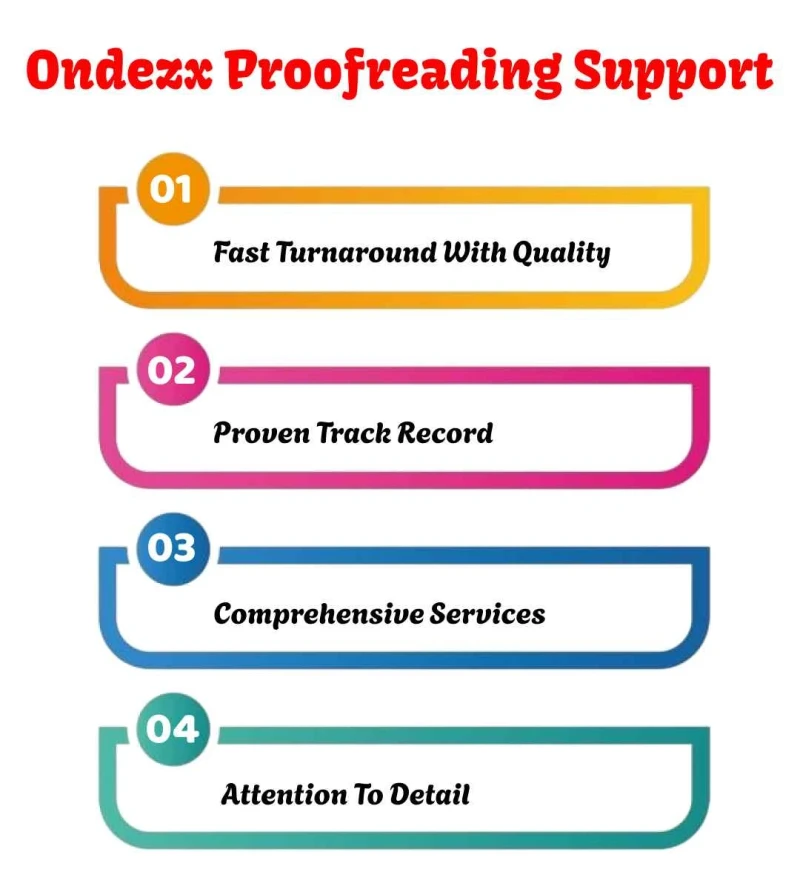
At Ondezx, we realise how crucial precision and lucidity are to scholarly writing. Our team of skilled proofreaders is dedicated to helping research scholars, PhD aspirants, and students present their work with accuracy and professionalism. With a specialisation in academic orientation, we do more than mere grammatical corrections by maintaining correct structure, consistency of citations, and following academic style manuals.
Ondezx delivers quick results without compromising on quality, making it a trusted choice for scholars working with strict deadlines.
We have supported numerous researchers in refining journal articles, dissertations, and assignments, helping them achieve higher acceptance rates in reputed publications.
From thorough proofreading to formatting adjustments and research assistance, Ondezx provides reliable guidance tailored to your academic needs.
By combining knowledge with meticulous attention to detail, we ensure your work is informative, accurate, and aligned with scholarly excellence.
Explore our expert proofreading tips to discover insights and academic guidance from Ondezx. Get Ondezx's proofreading and research assistance now and take a secure step toward academic triumph.
Proofreading is the crucial final step in preparing academic work, ensuring accuracy in grammar, punctuation, and formatting. Unlike editing, which improves the structure, clarity, and flow of ideas, proofreading focuses on polishing the document by removing minor but impactful errors. This process strengthens the credibility and readability of research papers, dissertations, and assignments.
Professional proofreading services are essential for maintaining quality, upholding academic standards, and maximising acceptance in journals or thesis evaluations. To achieve precision and academic excellence, choose ondezx proofreading support, your trusted partner in enhancing clarity, credibility, and scholarly success.
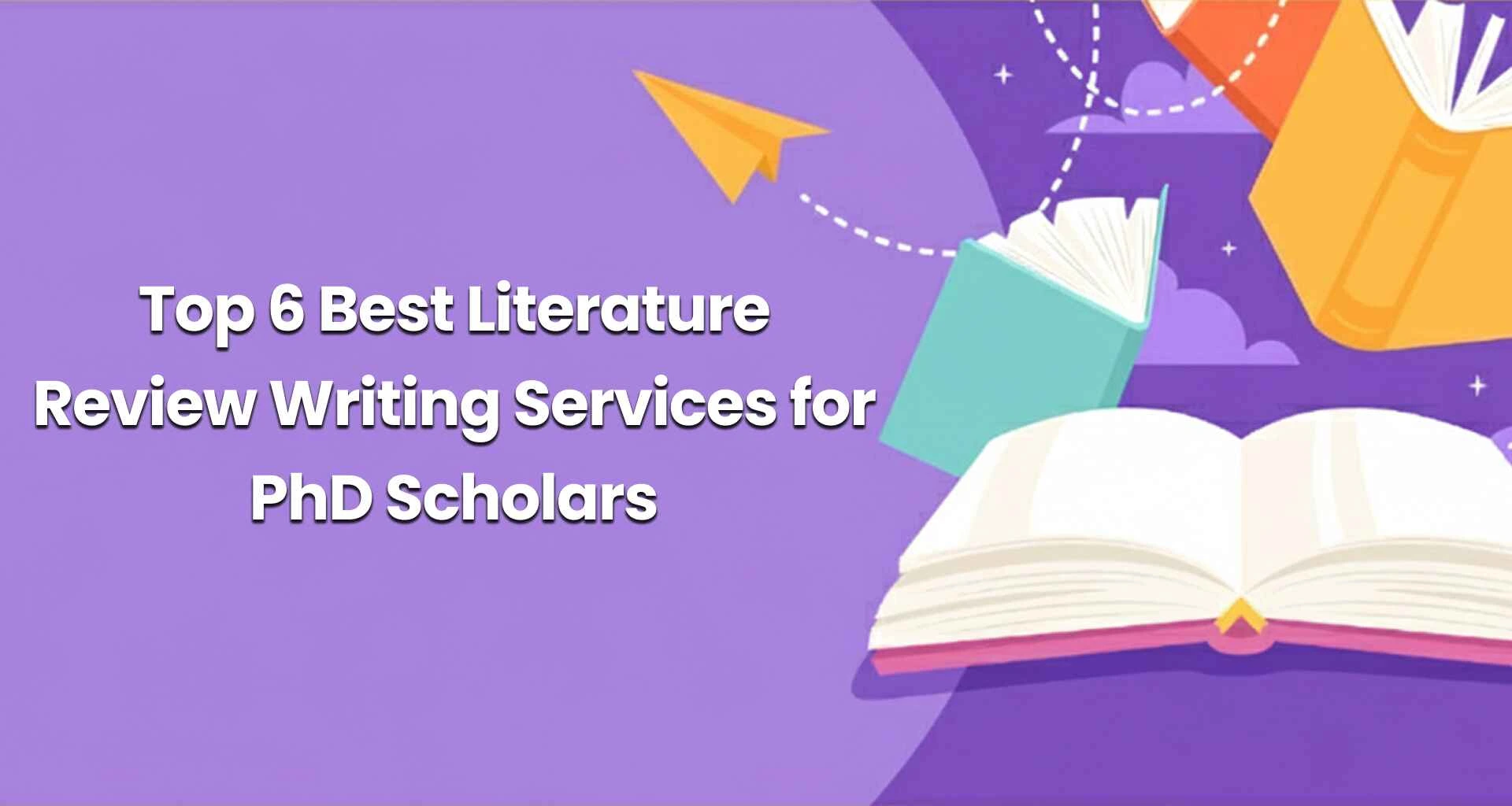
Top 5 Best Literature Review Writing Service for PhD Scholars
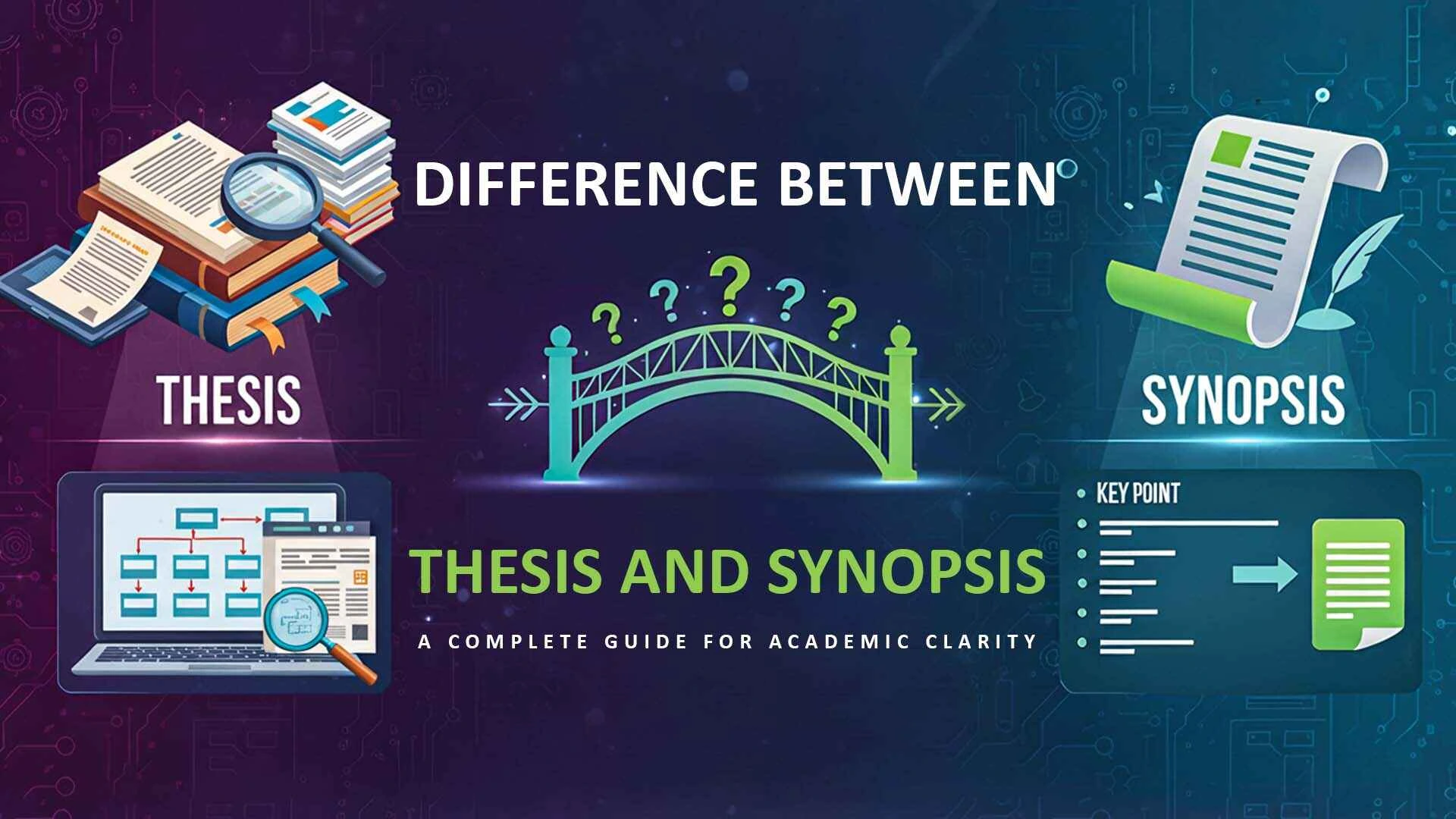
Difference Between Thesis and Synopsis: A Complete Guide for Academic Clarity
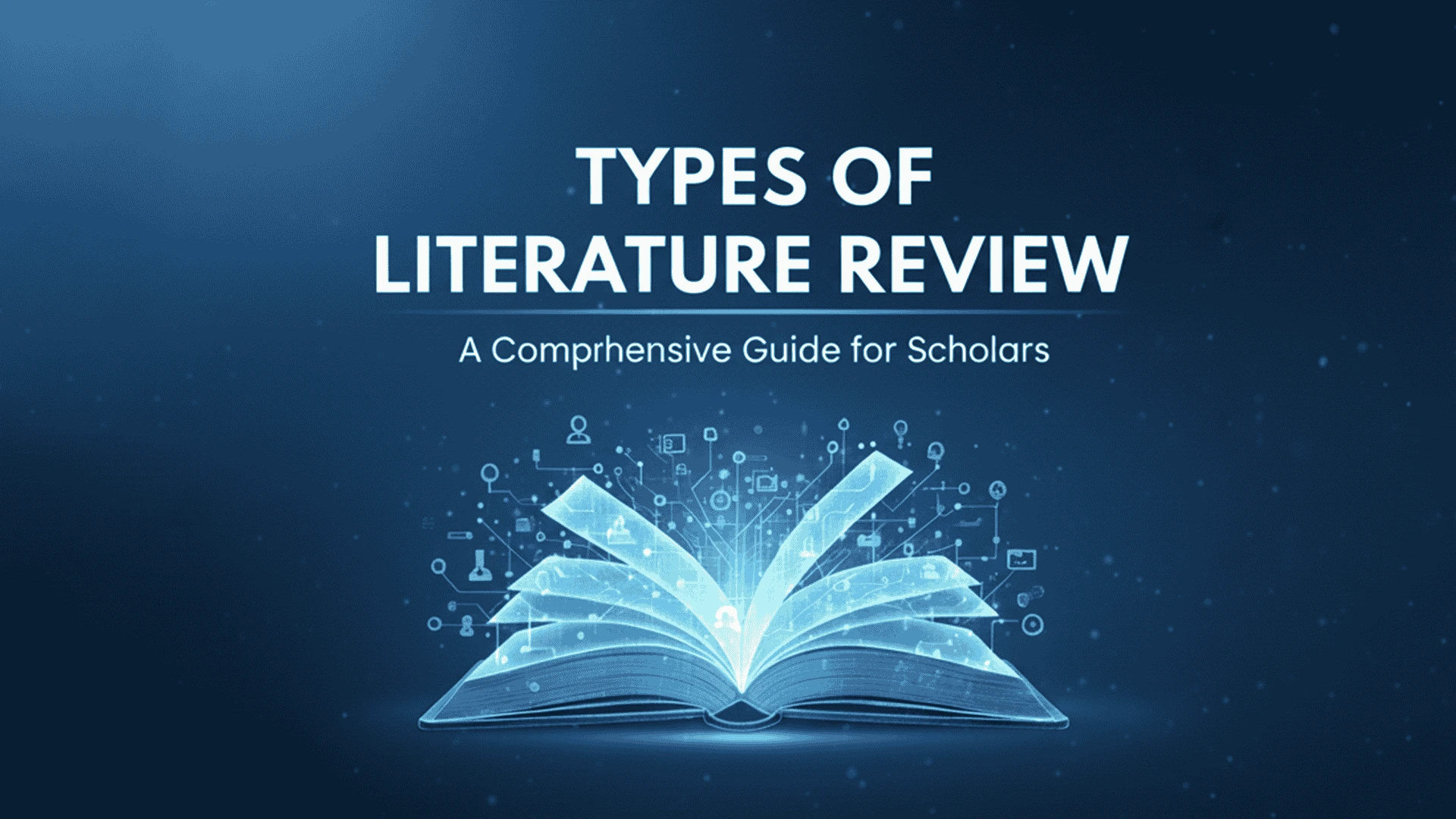
Types of Literature Review Comprehensive Guide for Scholars

Best PhD Assistance Services
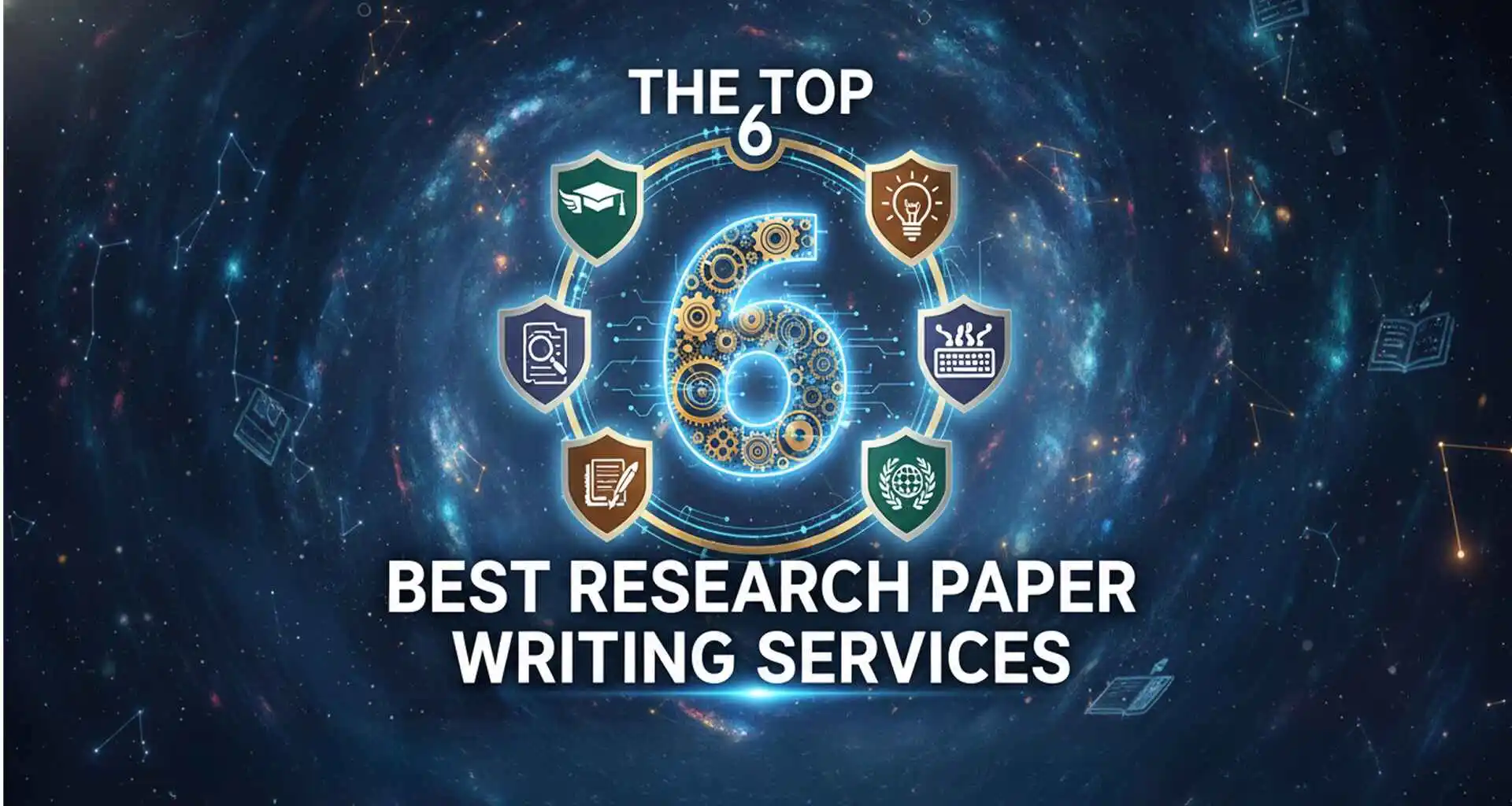
The Top 6 Best Research Paper Writing Services